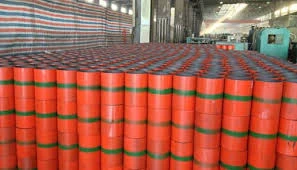- Afrikaans
- Albanian
- Amharic
- Arabic
- Armenian
- Azerbaijani
- Basque
- Belarusian
- Bengali
- Bosnian
- Bulgarian
- Catalan
- Cebuano
- Corsican
- Croatian
- Czech
- Danish
- Dutch
- English
- Esperanto
- Estonian
- Finnish
- French
- Frisian
- Galician
- Georgian
- German
- Greek
- Gujarati
- Haitian Creole
- hausa
- hawaiian
- Hebrew
- Hindi
- Miao
- Hungarian
- Icelandic
- igbo
- Indonesian
- irish
- Italian
- Japanese
- Javanese
- Kannada
- kazakh
- Khmer
- Rwandese
- Korean
- Kurdish
- Kyrgyz
- Lao
- Latin
- Latvian
- Lithuanian
- Luxembourgish
- Macedonian
- Malgashi
- Malay
- Malayalam
- Maltese
- Maori
- Marathi
- Mongolian
- Myanmar
- Nepali
- Norwegian
- Norwegian
- Occitan
- Pashto
- Persian
- Polish
- Portuguese
- Punjabi
- Romanian
- Russian
- Samoan
- Scottish Gaelic
- Serbian
- Sesotho
- Shona
- Sindhi
- Sinhala
- Slovak
- Slovenian
- Somali
- Spanish
- Sundanese
- Swahili
- Swedish
- Tagalog
- Tajik
- Tamil
- Tatar
- Telugu
- Thai
- Turkish
- Turkmen
- Ukrainian
- Urdu
- Uighur
- Uzbek
- Vietnamese
- Welsh
- Bantu
- Yiddish
- Yoruba
- Zulu
Exploring the Dynamics of Coupling in Complex Systems and Their Implications
Understanding Coupling Blanks Essential Components in Mechanical Engineering
In the realm of mechanical engineering, the term coupling refers to a mechanism that connects two shafts together at their ends for the purpose of transmitting power. The coupling blank, a fundamental component in this context, plays a critical role in ensuring the efficiency and reliability of various mechanical systems. This article delves into the importance of coupling blanks, their types, manufacturing processes, and applications across different industries.
What is a Coupling Blank?
A coupling blank is a pre-formed piece of material that is designed to be machined into a specific coupling shape. These blanks serve as the starting point in the production of couplings, facilitating the integration of two rotating shafts while minimizing friction, wear, and energy loss. The design of a coupling blank can vary significantly based on the intended application, ranging from simple to complex geometries that cater to different engineering requirements.
Types of Coupling Blanks
Coupling blanks can be classified based on their design and the type of coupling they will eventually become. Some common types include
1. Flexible Coupling Blanks These blanks are designed to accommodate misalignments and vibrations. They are typically made from elastomeric materials, allowing for flexibility and reducing wear on the shafts.
2. Rigid Coupling Blanks These are used when precise alignment is required, as they do not allow for any degree of movement between the coupled shafts. Rigid coupling blanks are often manufactured from materials like steel or aluminum for enhanced strength and durability.
3. Oldham Coupling Blanks An Oldham coupling is ideal for applications requiring axial movement between the shafts. This type of coupling uses a floating disc and is particularly useful in situations where alignment changes frequently.
4. Gear Coupling Blanks Designed for high-torque applications, these coupling blanks utilize gears to transfer power, allowing for flexibility in alignment and accommodating large displacement.
Manufacturing Processes
The production of coupling blanks involves several steps that ensure precision and quality. The typical process may include
1. Material Selection Selecting the right material is crucial as it directly affects the performance and longevity of the coupling. Common materials include steel, brass, aluminum, and plastic.
coupling blank

2. Cutting/Forming The raw material is cut or formed into the desired shape before moving onto the machining process. Hot or cold forging methods may be employed to achieve the required dimensions and structural integrity.
3. Machining The formed blanks undergo machining, including turning, milling, and grinding, to achieve the precise dimensions and surface finishes necessary for effective coupling.
4. Heat Treatment To enhance the mechanical properties of the coupling blanks, heat treatment processes such as hardening or annealing may be applied.
5. Quality Control Rigorous testing and inspections are conducted to ensure that the coupling blanks meet industry standards and specifications before being sent to market.
Applications of Coupling Blanks
Coupling blanks find applications across various industries due to their versatility and effectiveness in power transmission. Some key areas include
1. Automotive Industry Coupling blanks are essential in the manufacturing of drive shafts, ensuring smooth power transfer from the engine to the wheels while accommodating vibrations and misalignments.
2. Aerospace In aircraft systems, where precision and reliability are paramount, coupling blanks are utilized to connect various rotating components, such as engines and propellers.
3. Industrial Machinery Couplings are integral in equipment like conveyors, pumps, and compressors, where they help in the seamless transmission of power.
4. Robotics The emergence of robotics has led to a growing need for specialized coupling blanks that enable the smooth movement of robotic joints and actuators.
Conclusion
In summary, coupling blanks are indispensable components in mechanical engineering, allowing for the efficient transfer of power across various applications. Understanding their types, manufacturing processes, and the industries they serve not only highlights their importance but also underscores the advancements in engineering that continue to enhance performance and reliability. As technology evolves, so too will the designs and applications of coupling blanks, ensuring they remain a critical element in the ever-expanding field of mechanical systems.
-
Tubing Pup Joints: Essential Components for Oil and Gas OperationsNewsJul.10,2025
-
Pup Joints: Essential Components for Reliable Drilling OperationsNewsJul.10,2025
-
Pipe Couplings: Connecting Your World EfficientlyNewsJul.10,2025
-
Mastering Oilfield Operations with Quality Tubing and CasingNewsJul.10,2025
-
High-Quality Casing Couplings for Every NeedNewsJul.10,2025
-
Boost Your Drilling Efficiency with Premium Crossover Tools & Seating NipplesNewsJul.10,2025







